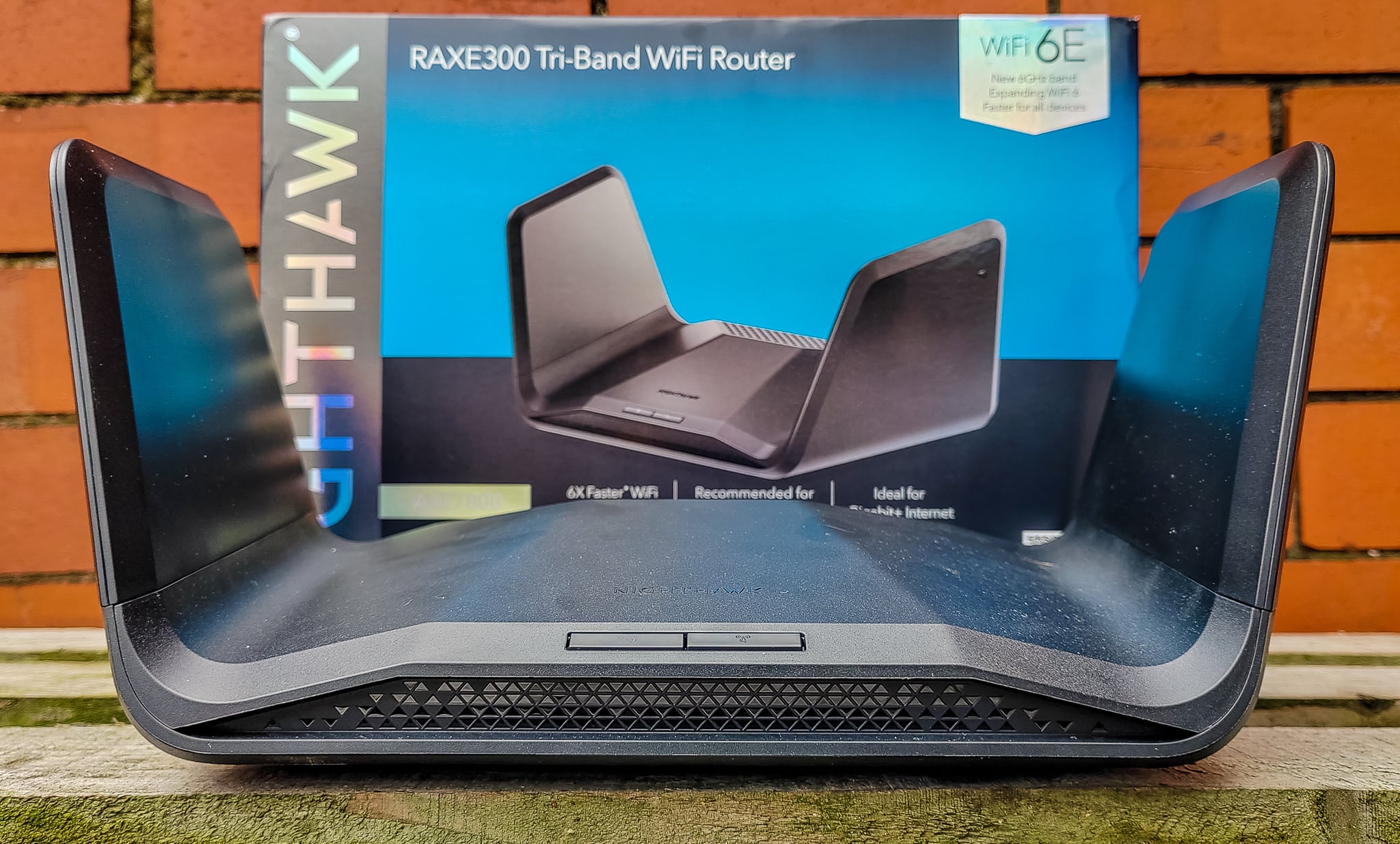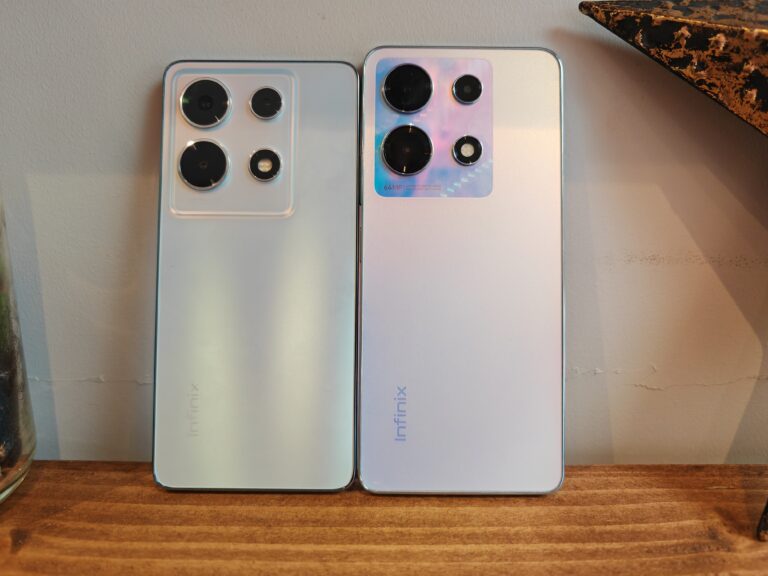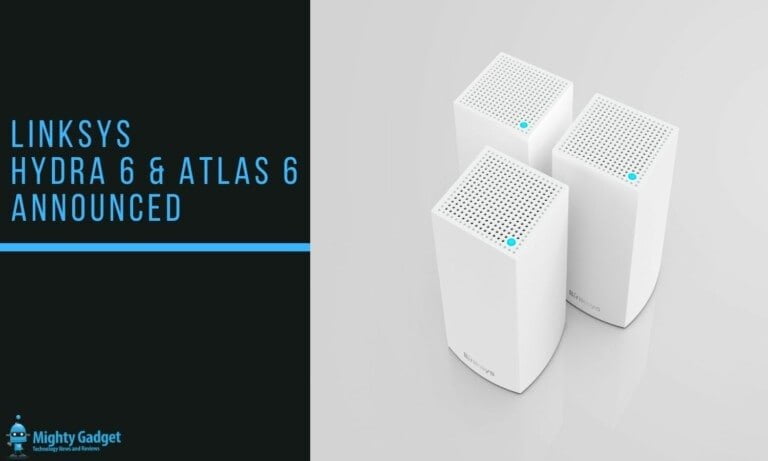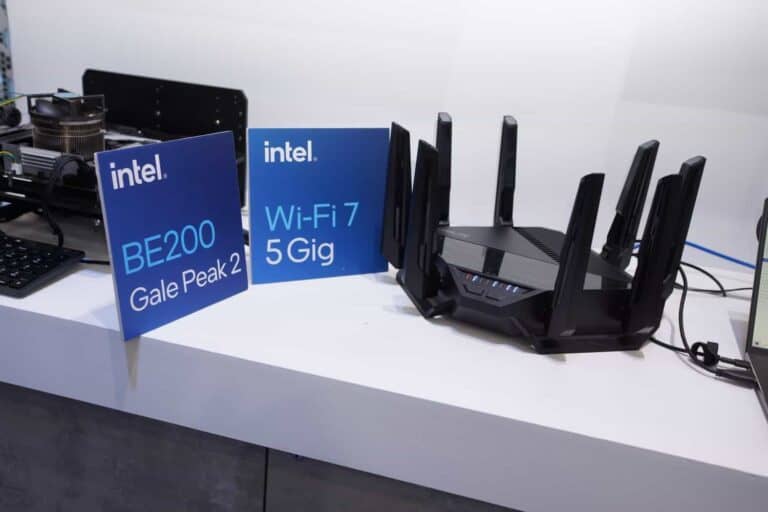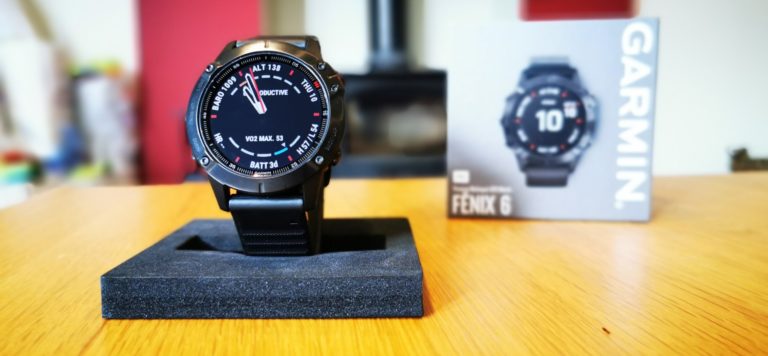Any links to online stores should be assumed to be affiliates. The company or PR agency provides all or most review samples. They have no control over my content, and I provide my honest opinion.
Earlier in the year, I reviewed the new flagship WiFi 6E gaming router from Netgear, the RAXE500. This new technology is rolling down into more affordable models, and I have recently been checking out the new RAXE300.
Netgear RAXE300 vs RAXE500 Specification
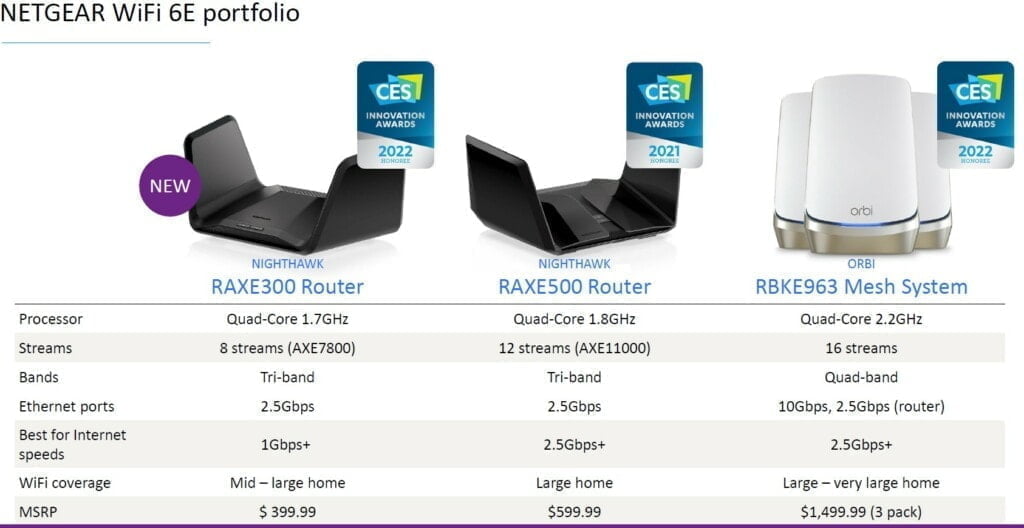
To save you going over the table below, the RAXE300 is just a trimmed-down version of the RAXE500. However, unless you are using this in a crowded user environment, I doubt you would ever notice the difference.
The number of bands available for both 2.5Ghz and 6Ghz has been dropped to 2×2. This should only affect you if you have a lot of devices transferring a lot of data on each band at any one time. WiFi 6GHz is still very rare and has a high throughput, so it would take quite a demanding and unusual scenario for this to struggle.
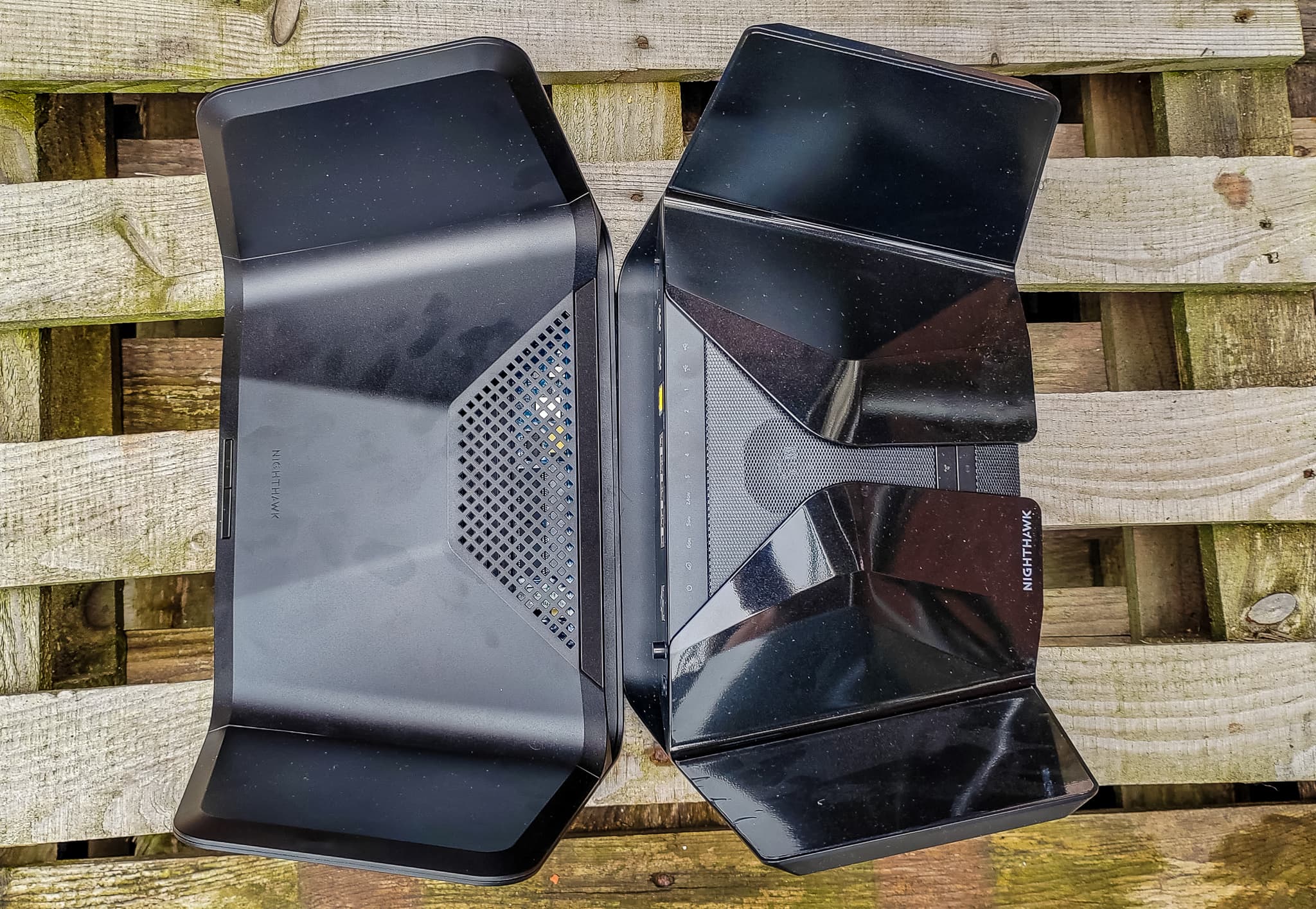
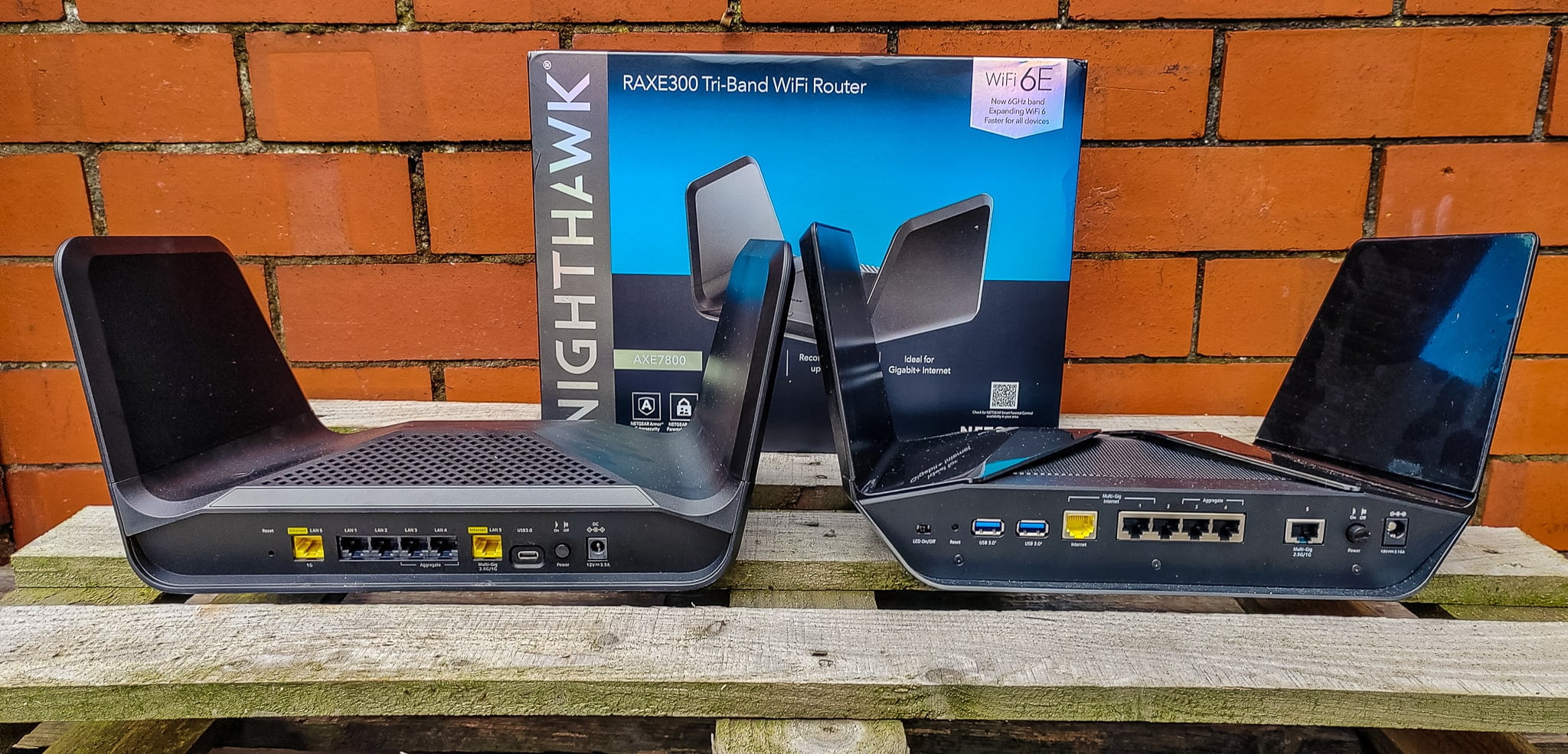
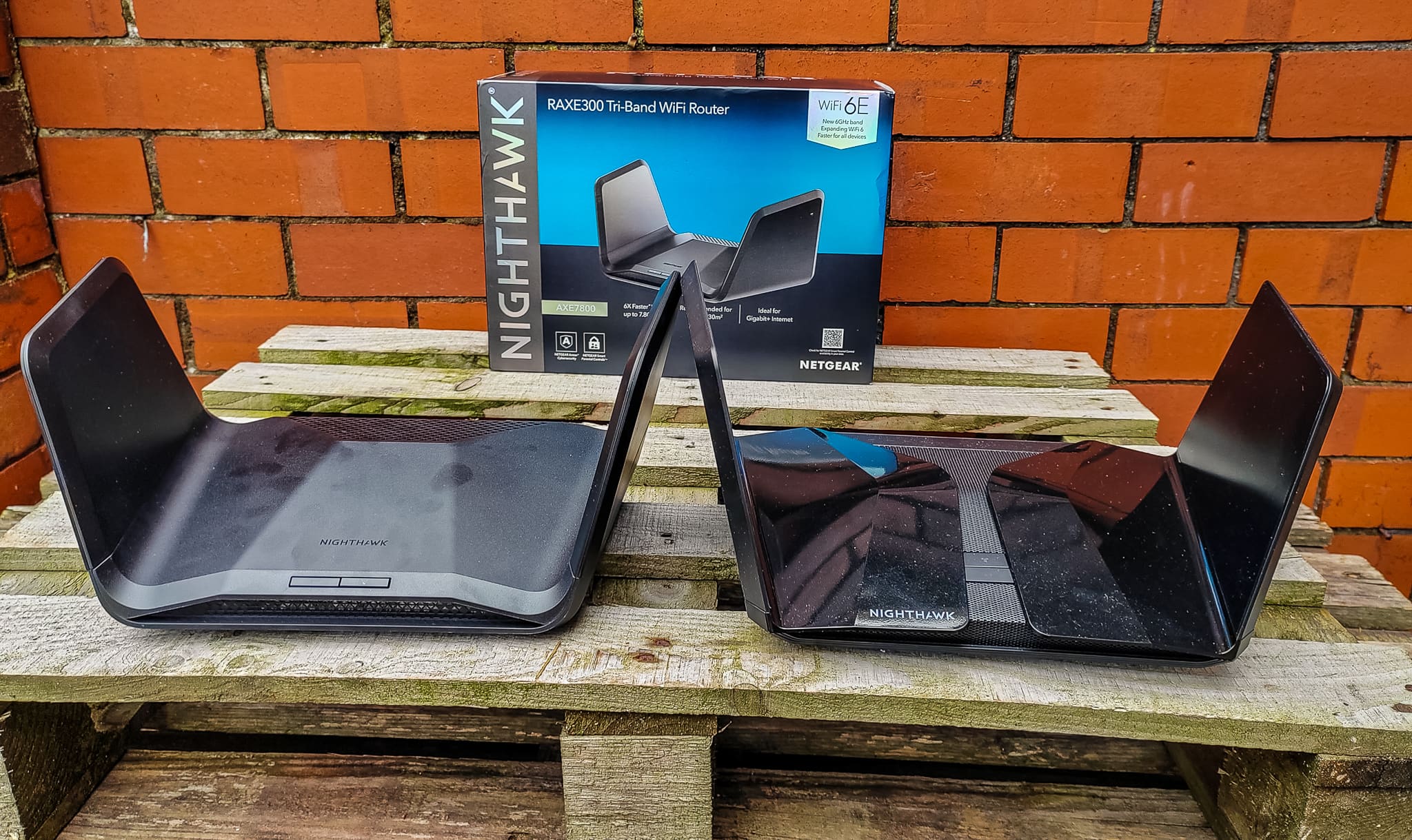
It is unlikely we will see 4×4 client chips launch, but if they did, then this would make a big difference to the above statement.
If anything, I’d say the WAN link aggregation may have a bigger real-world effect than the loss of the bands.
Netgear has also changed the multi-gig port and WAN ports slightly. You now have two ports that can act either as LAN or WAN, one being 1G and the other 2.5G. In the UK, you will almost certainly want to stick with the 1G as your WAN port and then 2.5G for LAN.
Other minor differences include dropping a USB port and switching it to USB-C. I found this quite inconvenient as most USB drives and external hard drives still use USB-A, so you will need an adaptor or hub. Then the RAXE300 is now fanless, not that I ever heard the fan on the RAXE500.
| Netgear | RAXE300 | RAXE500 |
|---|---|---|
| Wi-Fi Technology | Tri-Band AXE7800 | Tri-Band AXE11000 |
| First Band | 2.4GHz 2×2 Wi-Fi 6 Up to 574Mbps (20/40MHz) | 2.4GHz 4×4 Wi-Fi 6 Up to 1148Mbps (20/40MHz) |
| Second Band | 5GHz 4×4 Wi-Fi 6 Up to 4804Mbps (20/40/80/160MHz) | 5GHz 4×4 Wi-Fi 6 Up to 4804Mbps (20/40/80/160MHz) |
| Third Band | 6GHz 2×2 Wi-Fi 6E Up to 2402Mbps (20/40/80/160MHz) | 6GHz 4×4 Wi-Fi 6E Up to 4804Mbps (20/40/80/160MHz) |
| Backward Compatibility | 802.11a/b/g/n/ac | 802.11a/b/g/n/ac |
| AP Mode | Yes | Yes |
| Gigabit Network Port | 4x LAN, 1x WAN/WAN | 4x LAN, 1x WAN/LAN |
| Multi-Gig Network Port | 1x 2.5Gbps LAN/WAN | 1x 2.5Gbps LAN/WAN |
| LAN Link Aggregation | Yes (LAN3 and LAN4) | Yes (LAN3 and LAN4) |
| WAN Link Aggregation | No | Yes (WAN + LAN1) |
| Dual-WAN | No | Yes (WAN+LAN1/2.5Gbps) |
| USB | 1x USB 3.0 (USB-C) | 2x USB 3.0 (USB-A) |
| Processing Power | 1.7GHz quad-core CPU, 256MB Flash, 512MB RAM | 1.8GHz 64-bit CPU 512MB Flash, 1GB RAM |
| Dimensions | 11.86 x 8.16 x 3.23 in (30.13 x 20.79 x 8.2 cm) | 11.7 x 8.3 x 3.07 in (29.8 x 21.1 x 7.8 cm) |
| Weight | 2.23 lb (1.01kg) | 3.2 lb (1.45 kg) |
Set Up
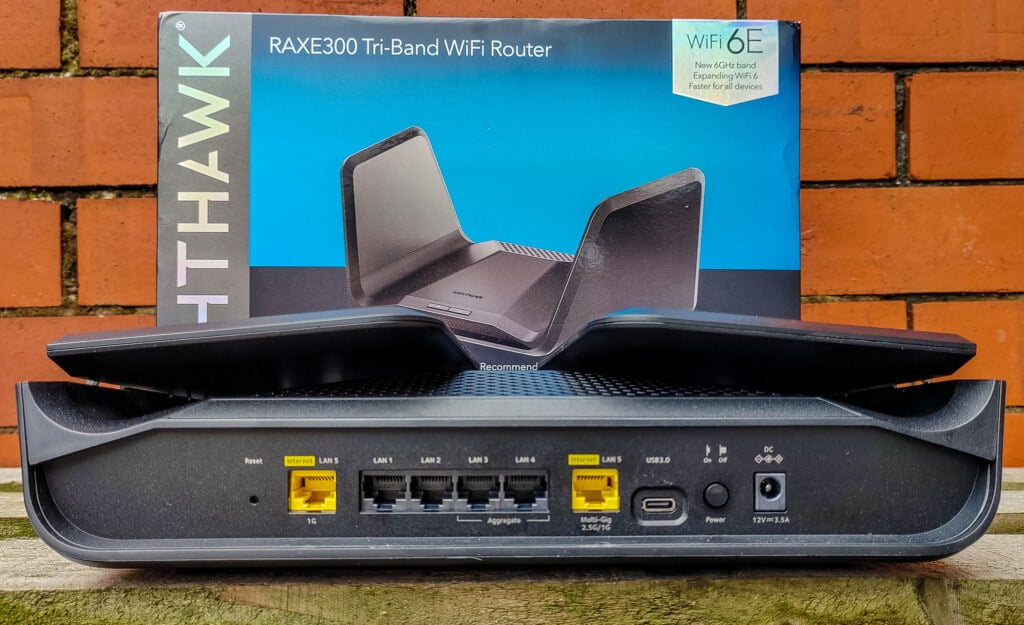
You can set it up via the Nighthawk app or the web interface. If you try and do it via the web, Netgear is quite forceful with trying to make you use the app, but there is a link at the bottom of the page that takes you to the web settings.
I had some minor set up problems with this router, I expect it was a combination of user error and my messy network set up.
For most testing, I integrate the router within my normal network and Netgear routers will then switch to 10.0.0.1 to avoid IP conflicts.
When testing throughput with my server, I switch to access point mode.
Things seemed to work at first, but when switching to access point mode, the 6Ghz network failed. I also had intermittent problems with the WiFi intermittently cutting off. This led me down a path of everything breaking. When I reset the router, I wasn’t even able to get it to connect to the internet at all.
Eventually, after my 3rd reset, everything just worked. I am fairly sure it is something else on my network that caused this problem, but I felt it was important to highlight it in case anyone else experiences similar issues.
WiFi 6E 6Ghz Performance
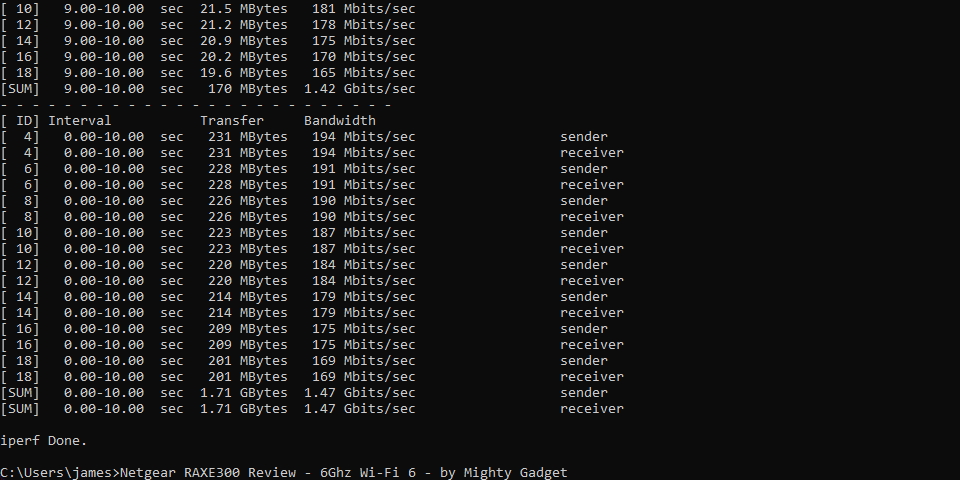
I tested speeds in three locations:
- Office using my Office PC with WiFi 6E PCIe card
- Living room downstairs using Huawei Matebook 14 and Pixel 6
- Front room, two rooms over from the living room, using the Huawei Matepad 14 and Pixel 6
With iPerf3 on the laptop, I achieved:
- Office: 1.47Gbits/sec
- Living Room: 798Mbit/s
- Front Room: 212Mbit/s
Using the Network SpeedTest app on an UnRAID server, my Pixel 6 achieved:
- Office: 1.39Gbits/sec
- Living Room: 1001Mbit/s
- Front Room: 351Mbit/s
With the default settings, I didn’t get amazing performance with 6Ghz. Windows would show a connection speed of around 1.4Gbps. Experimenting with different channels yielded much better results, and I ended up settling on channel 85.
Eventually, I was able to connect at 2.4Gbps, and iPerf speeds were 1.47Gbits/sec, which was fractionally less than 5Ghz on 160Mhz.
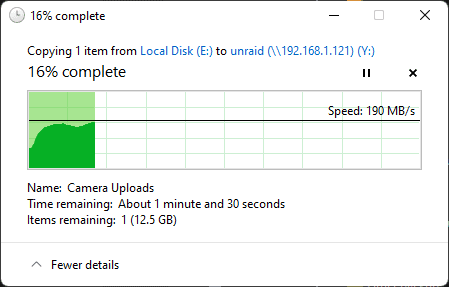
Files transfers were some of the best I have seen over WiFi. Transferring a large ZIP file, I was able to consistently get 192MB/s which equates to 1536Mbps.
As you would expect for 6Ghz, the signal quality drops off quicker than 5Ghz. When I tested this at the entrance of my garage/gym, I was unable to see the 6Ghz, whereas both the 2.4Ghz and 5Ghz were both visible and functional. The throughput was also lower than the RAXE500 when I tested the range on that.
WiFi 6 5Ghz Performance
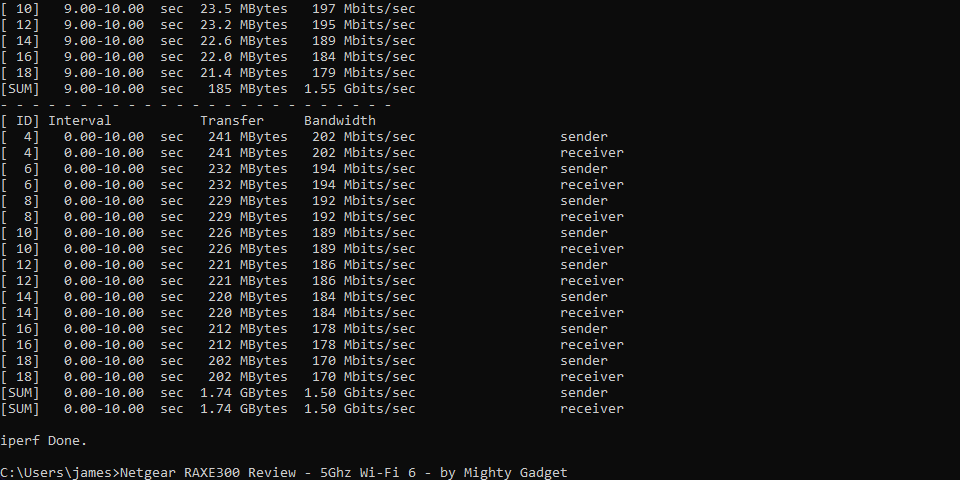
iPerf
- Office: 1.50Gbits/sec
- Living Room: 901Mbit/s
- Front Room: 433Mbit/s
Pixel 6
- Office: 1.41Gbits/sec
- Living Room: 956Mbit/s
- Front Room: 618Mbit/s
- Garage: 73 Mbit/s
In the past, I had some difficulties getting Netgear routers to establish a stable 160Mhz wide connection. But, in all my recent reviews, they have worked out of the box with no problems at all.
The 5Ghz performance was flawless during my testing, and the speeds remain high as the range increases. This does somewhat reduce the appeal of WiFi 6E and 6Ghz, but I live in semi-detached house in a coastal town. If you live in a flat in a city or near an airport/radar, you may have more issues with 160Mhz.
Range was outstanding, with the router located in my office, which is central to my home, I was able to get superb speeds throughout. As much as rave about mesh systems, having a decent router like this, optimally placed within the home, could likely provide superior performance at a lower price.
2.4Ghz Performance
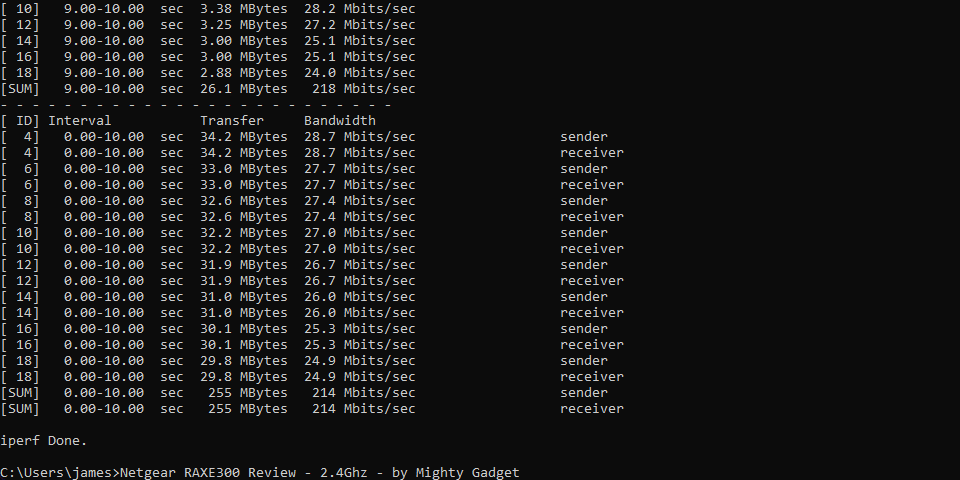
The Pixel 6 and iPerf results on the laptop were almost identical
- Office: 214 Mbits/sec
- Living Room: 72Mbit/s
- Front Room: 31Mbit/s
WiFi 5 5Ghz
Many devices will still continue to use the older WiFi standard and performance remains good here. Windows connects at the maximum speed of 1.7Gbps
- Office: 1.2 Gbits/sec
- Living Room: 829 Mbits/sec
- Front Room: 301 Mbits/sec
Again, the results were outstanding. In this case, some of the highest I have seen on WiFi 5. However, looking back at my old reviews, this is likely because they were running at 80Mhz, not 160Mhz.
Router Features
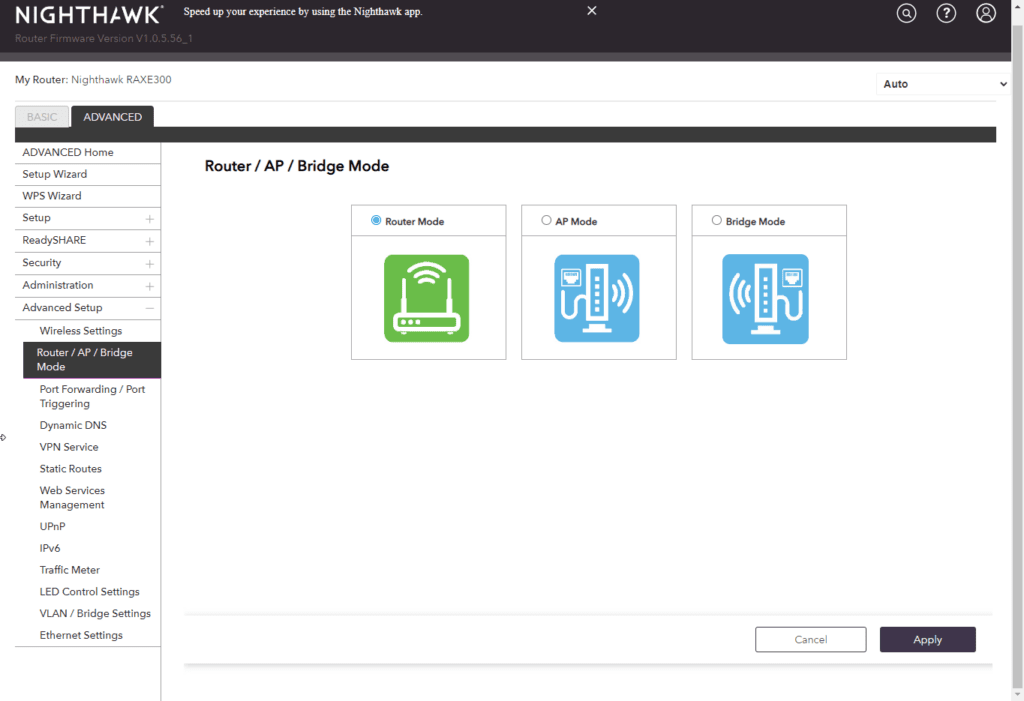
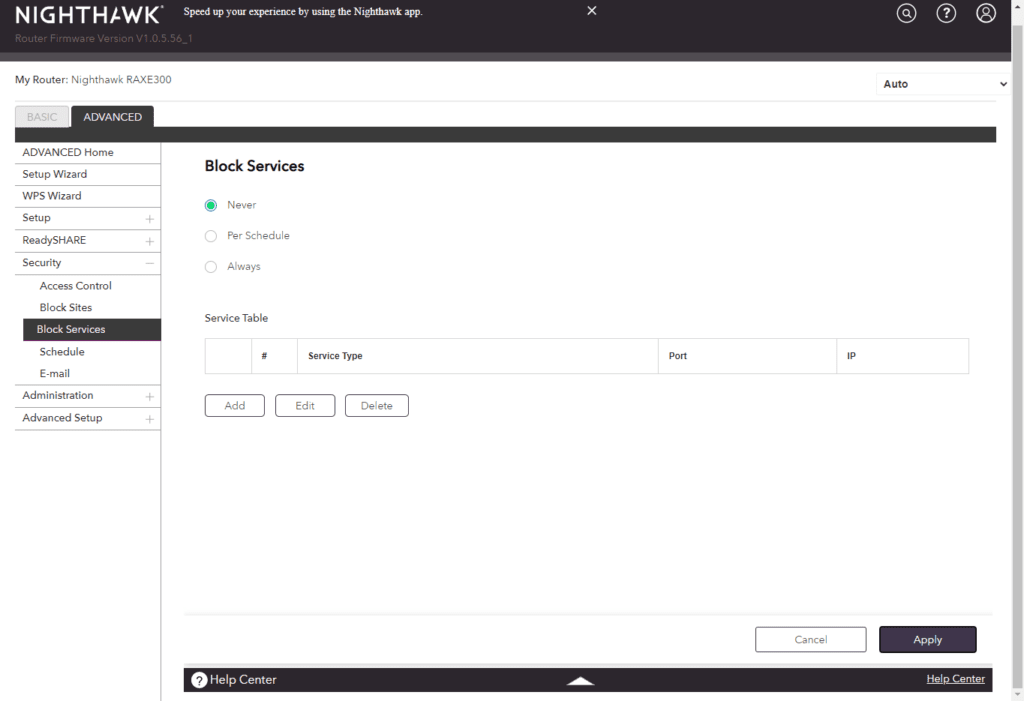
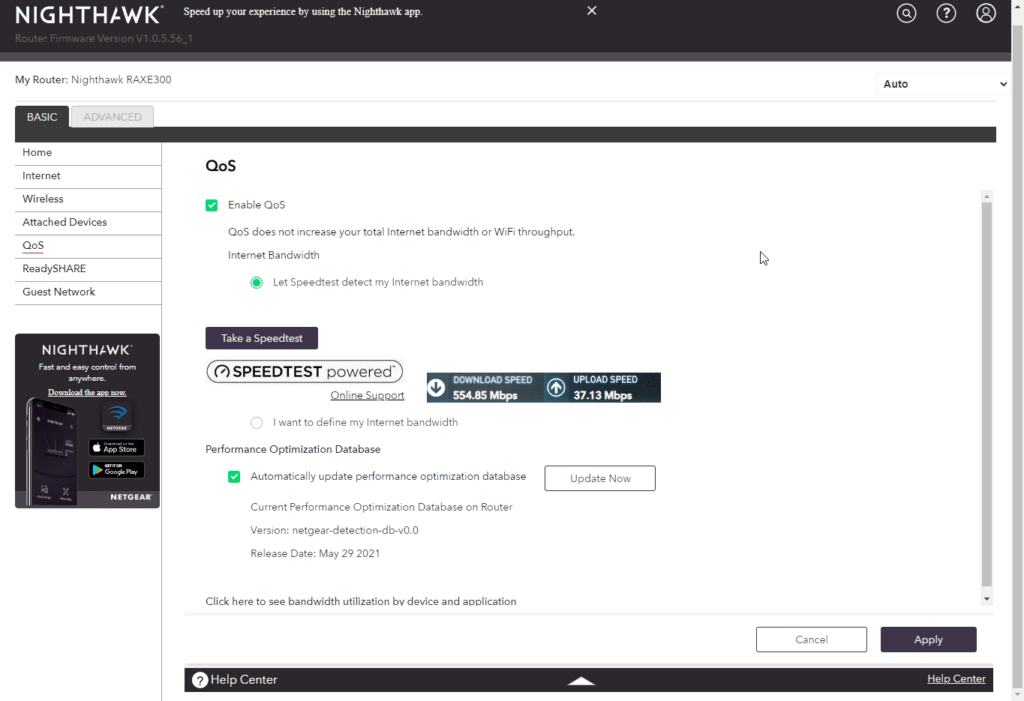
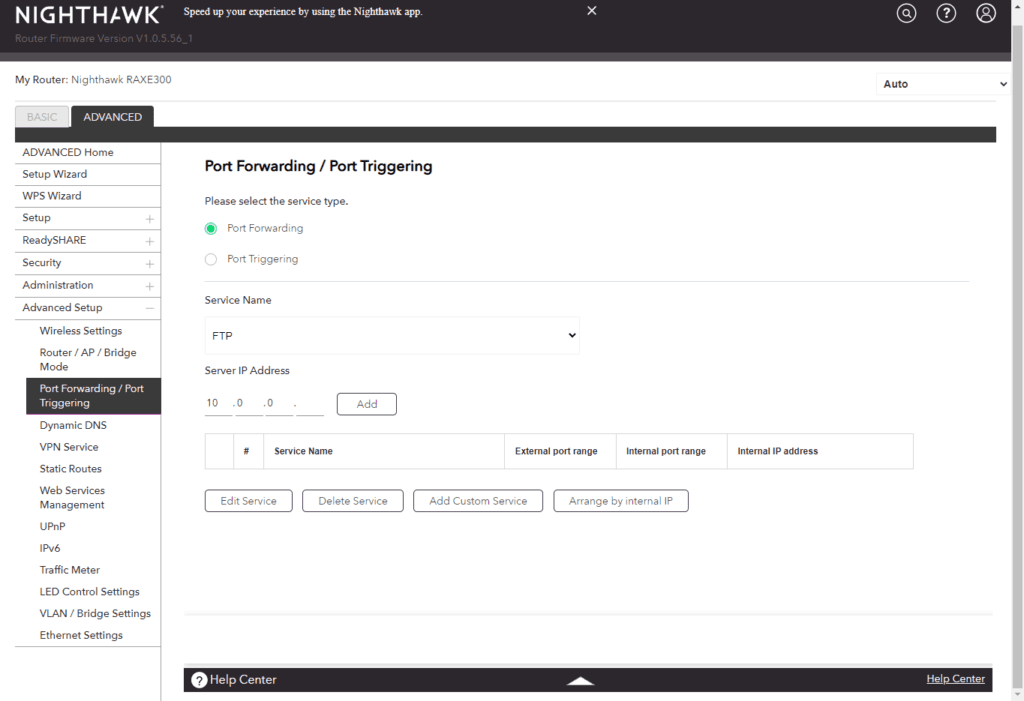
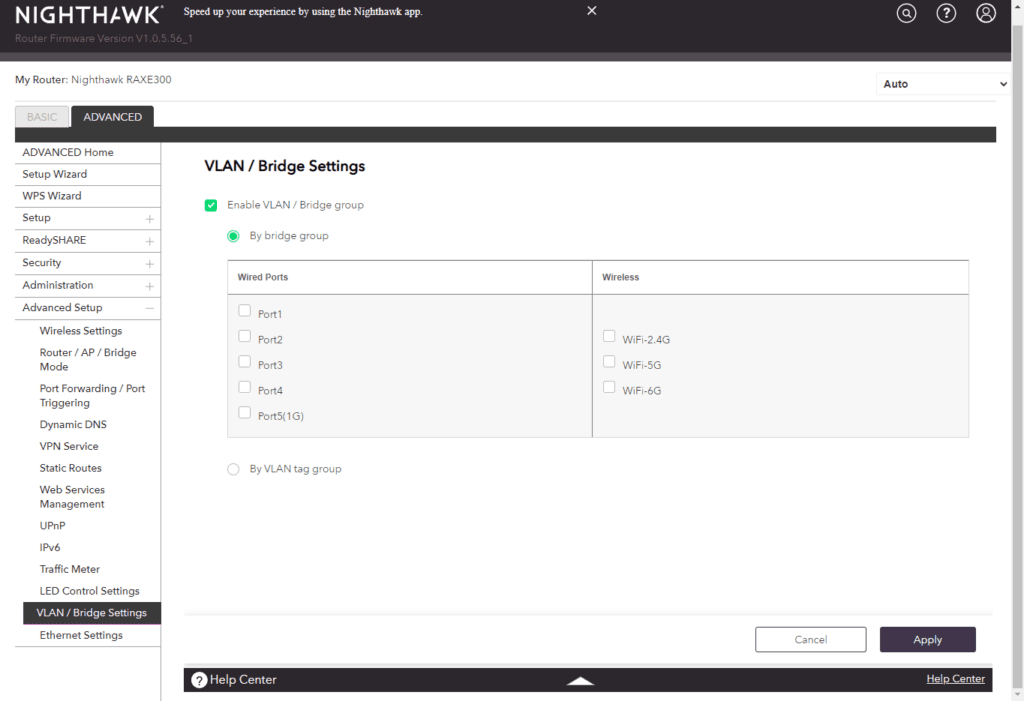

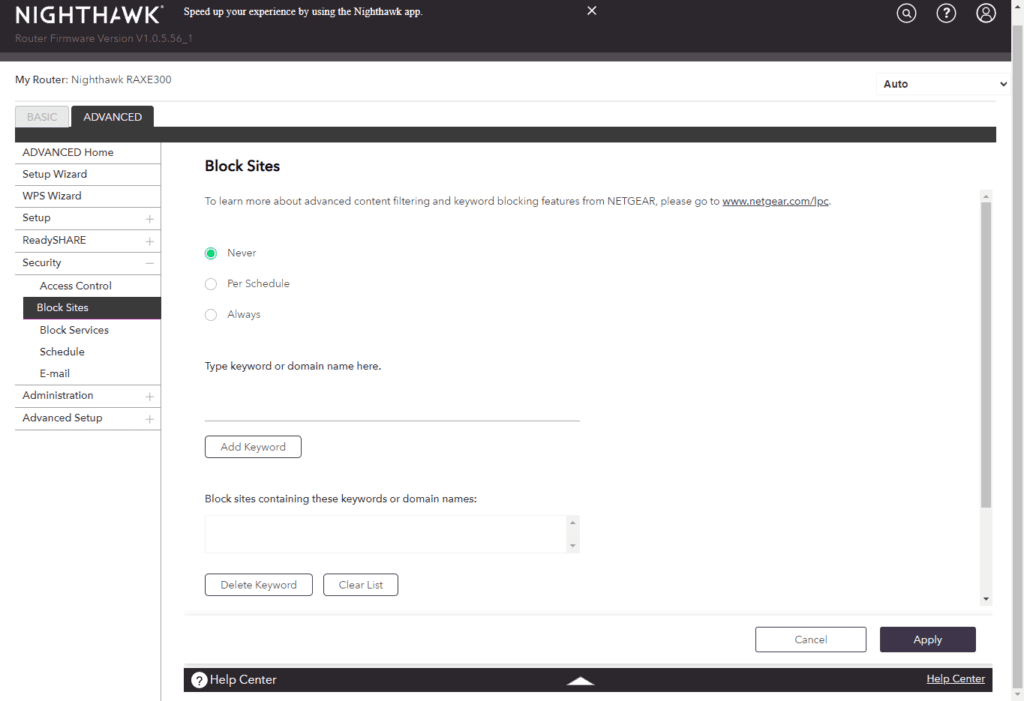
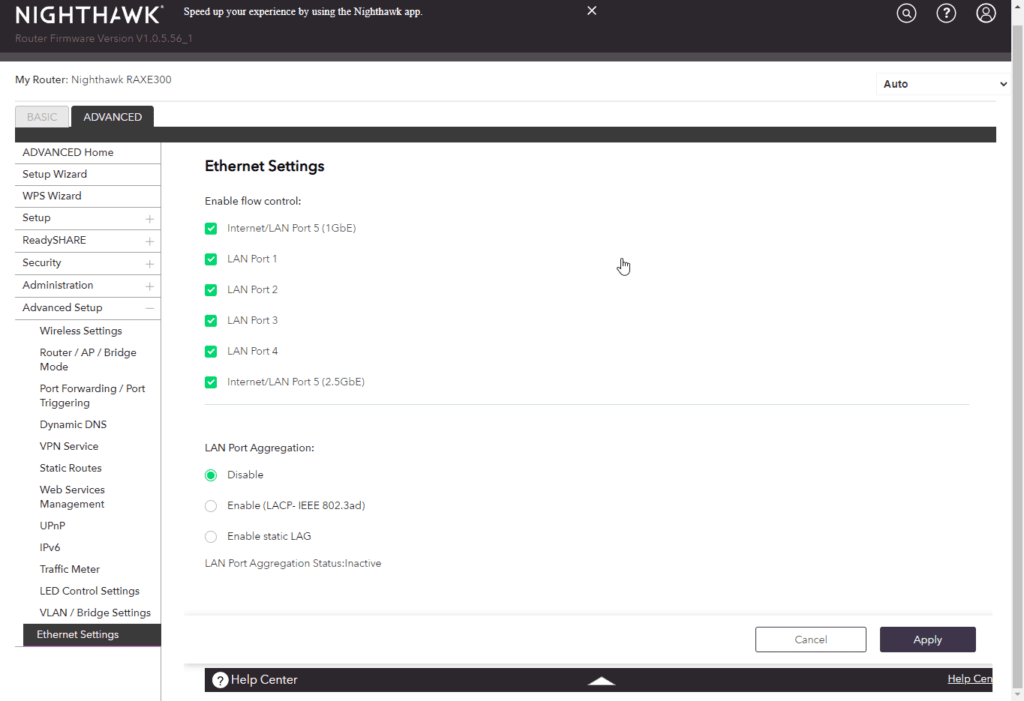
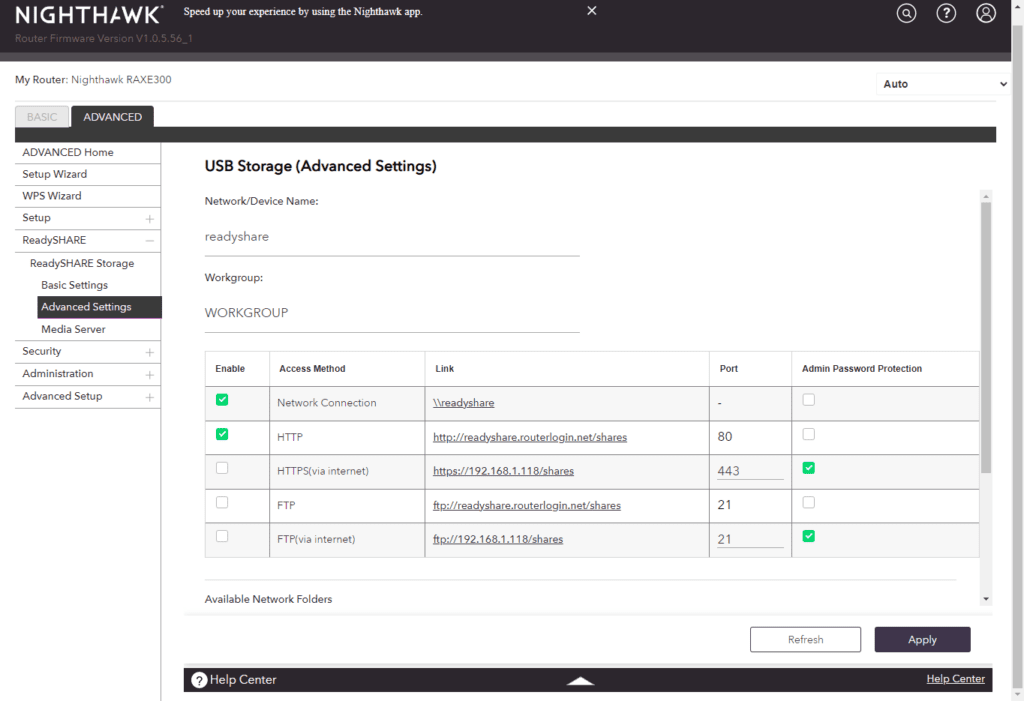
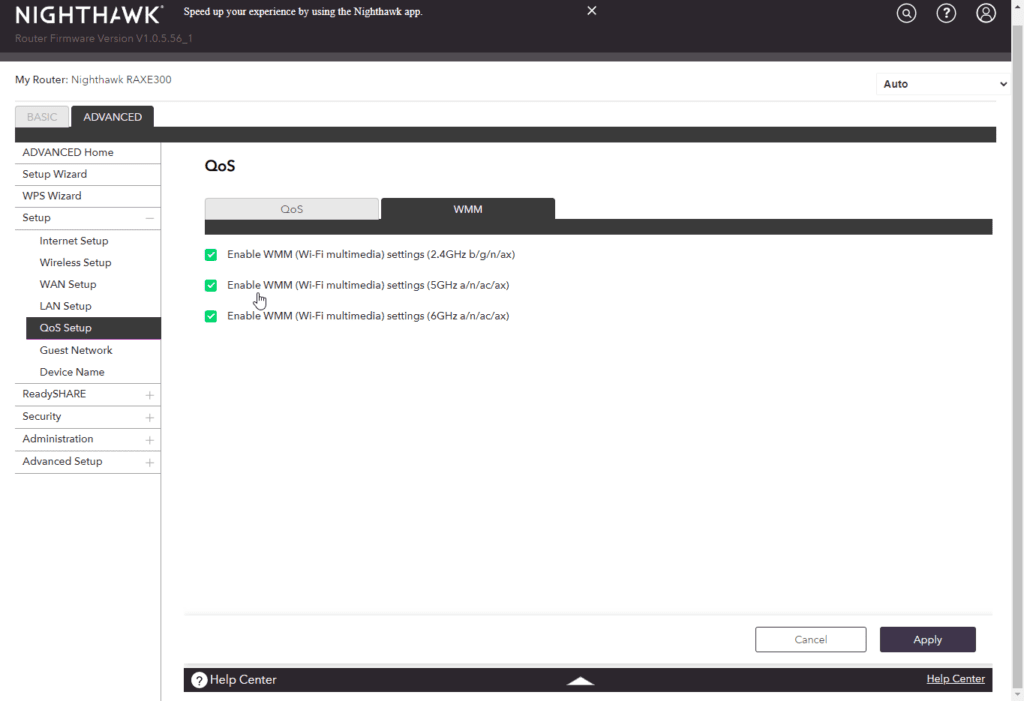
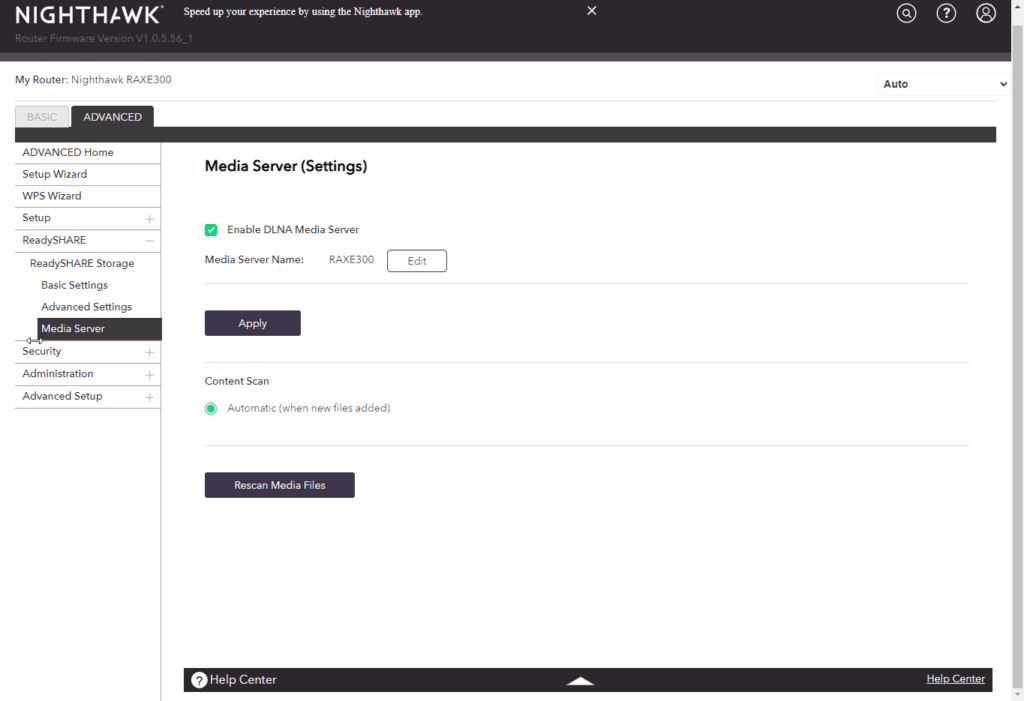
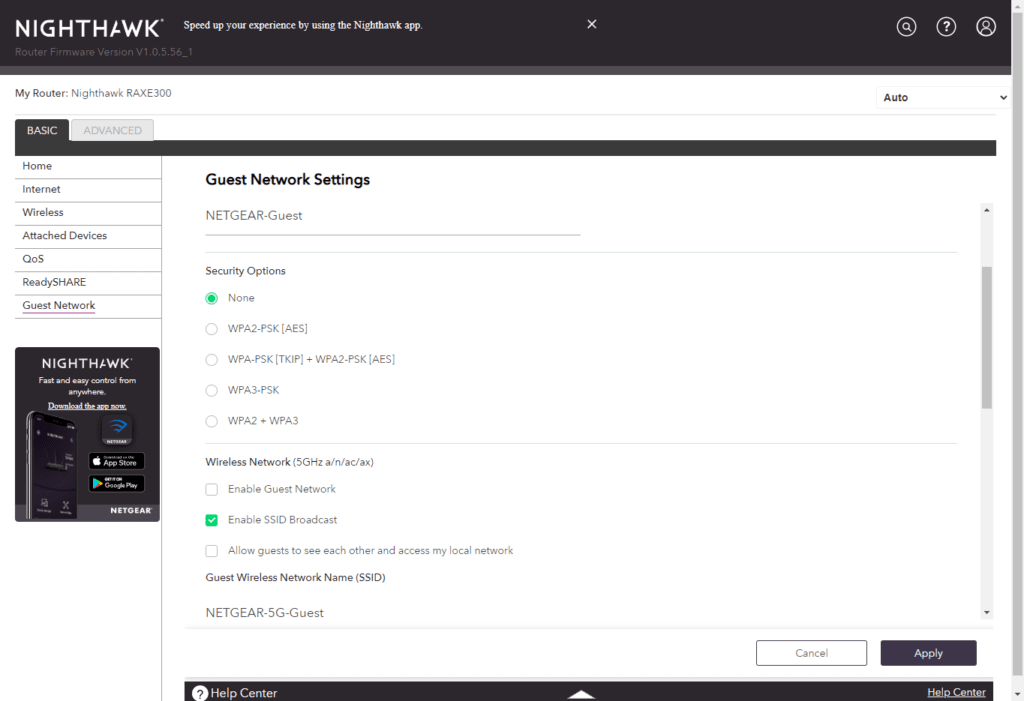
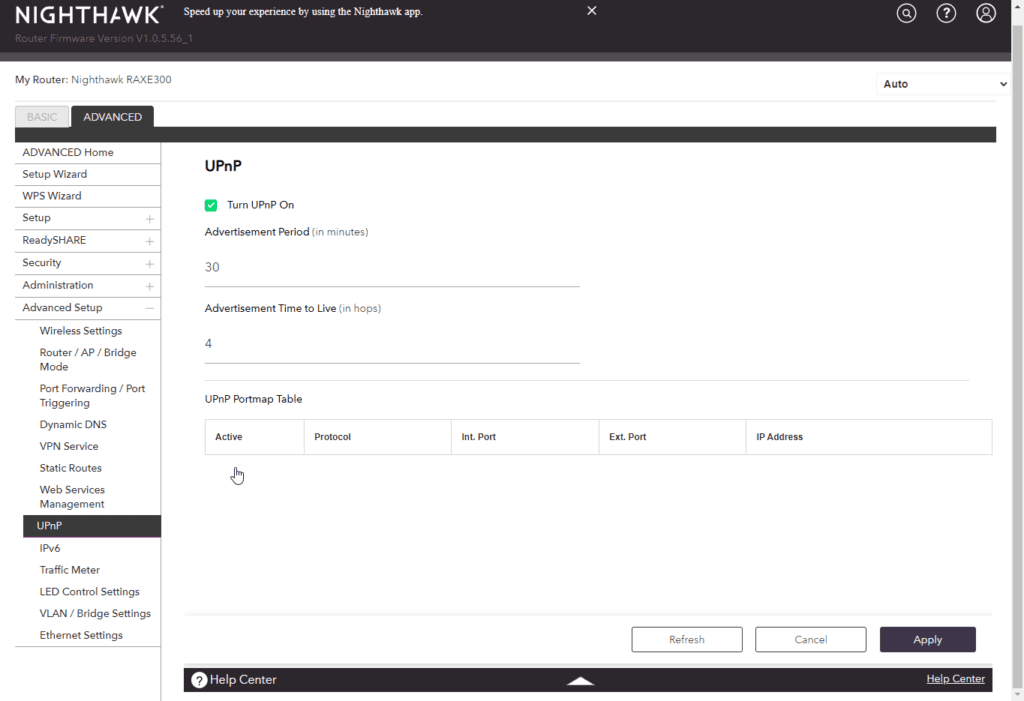
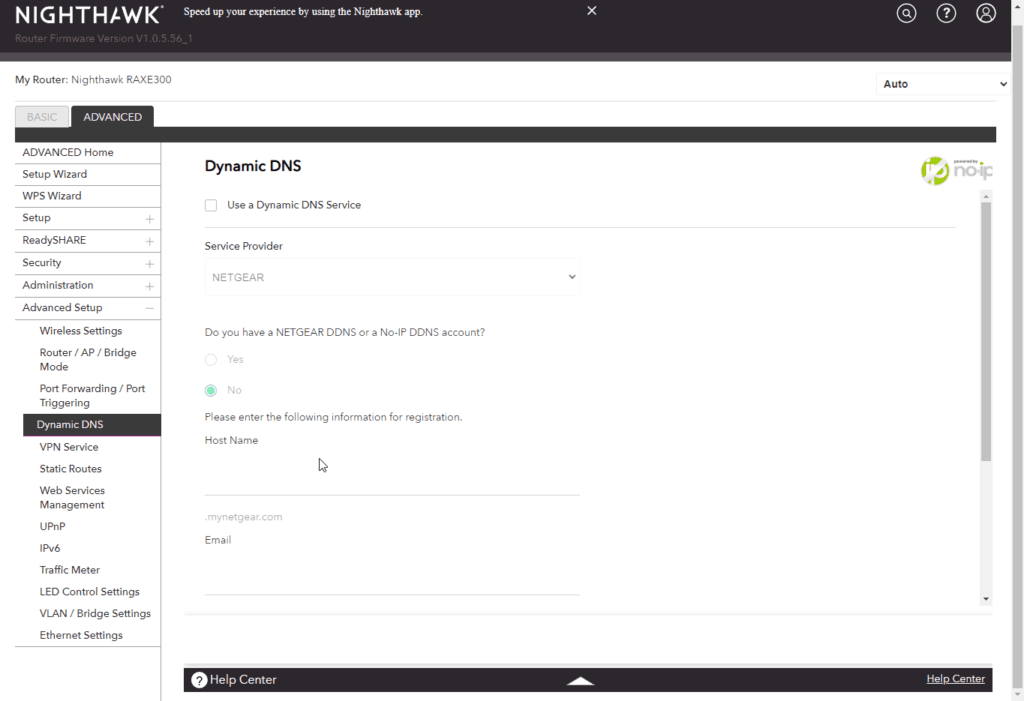
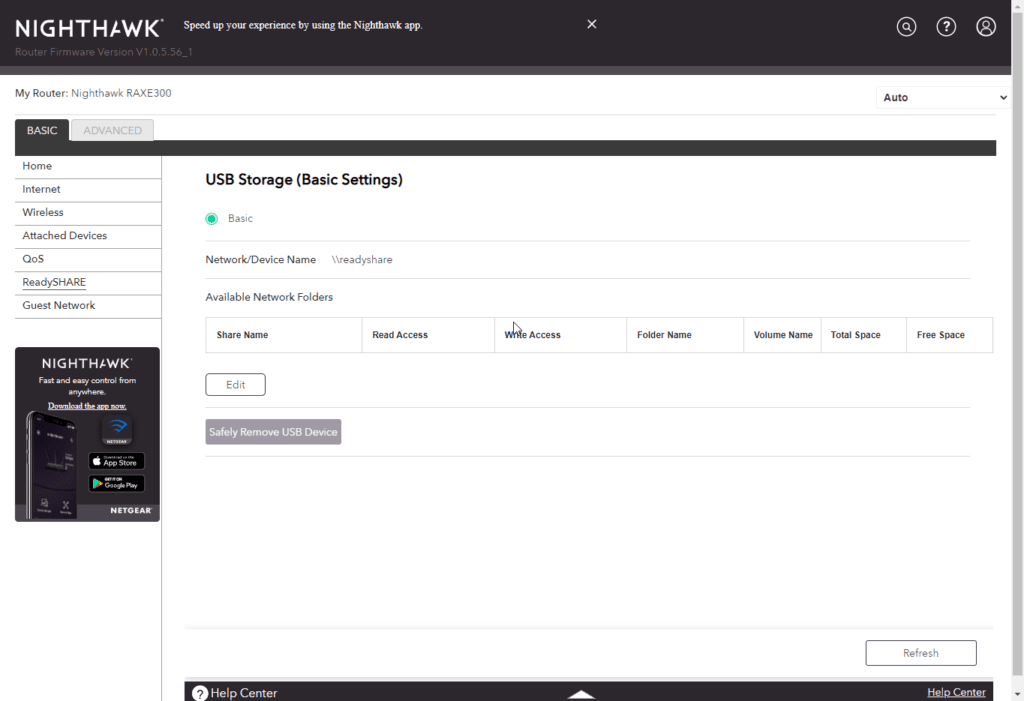
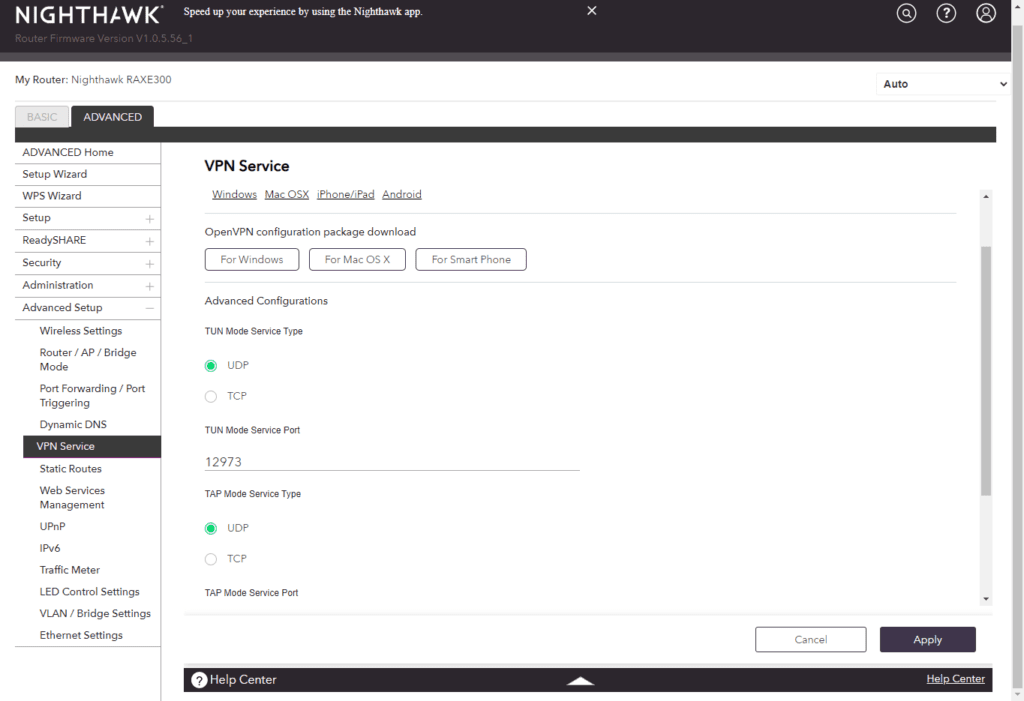
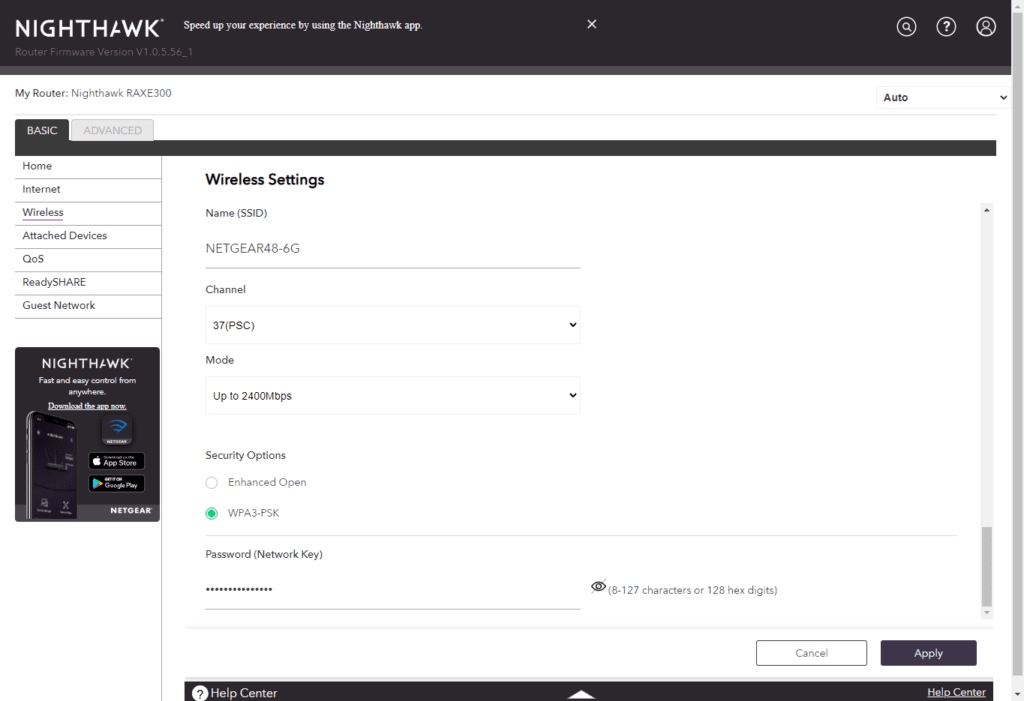
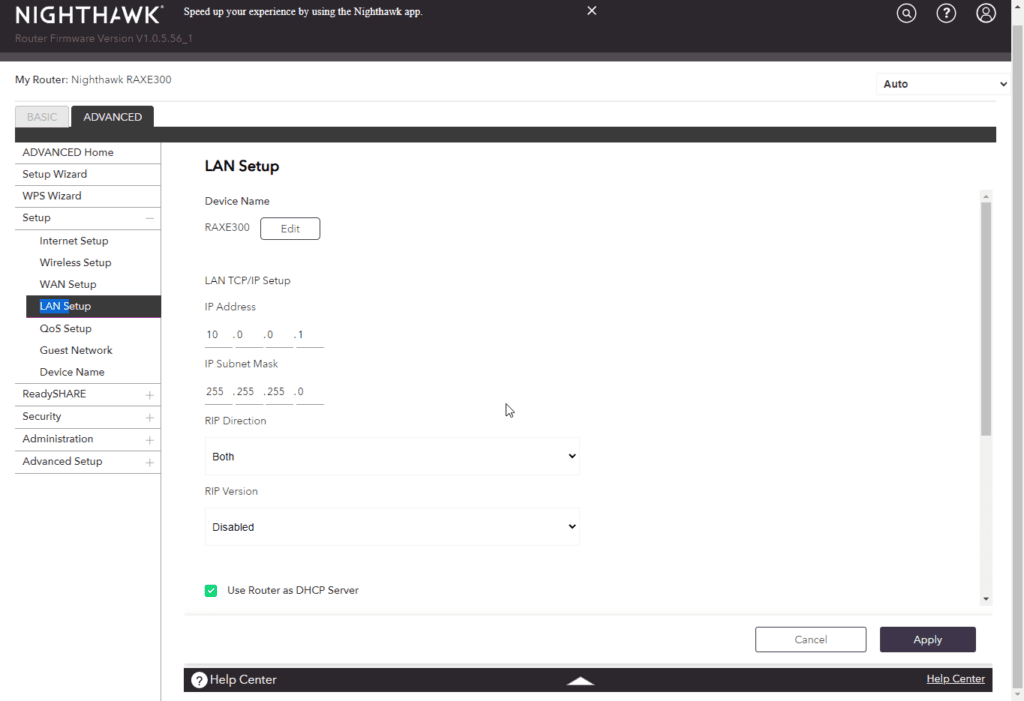
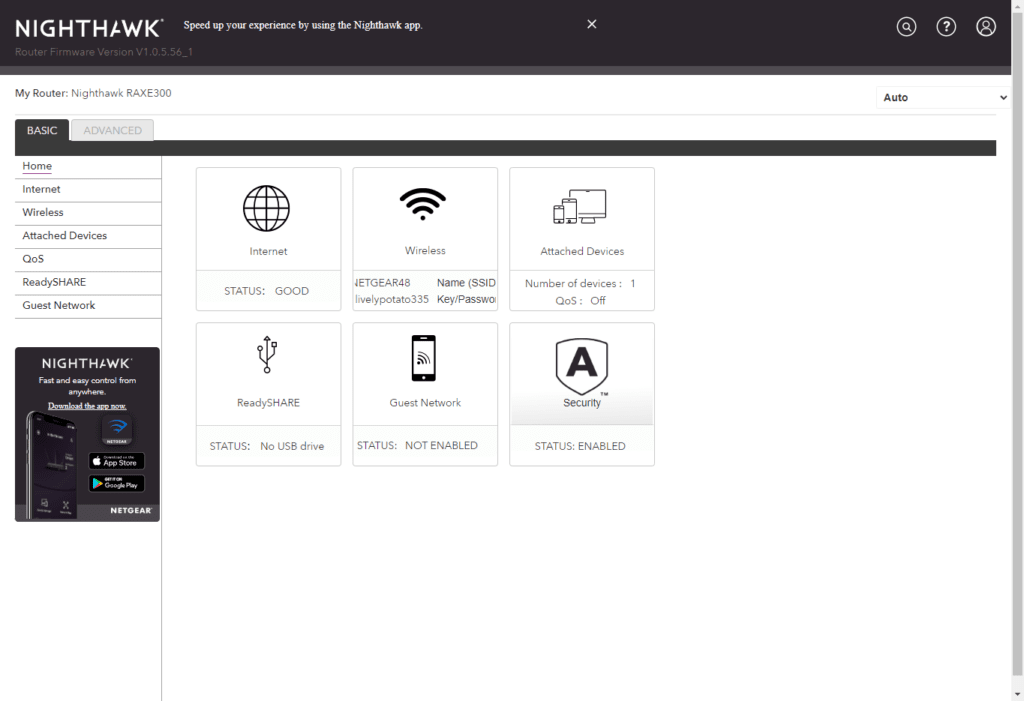
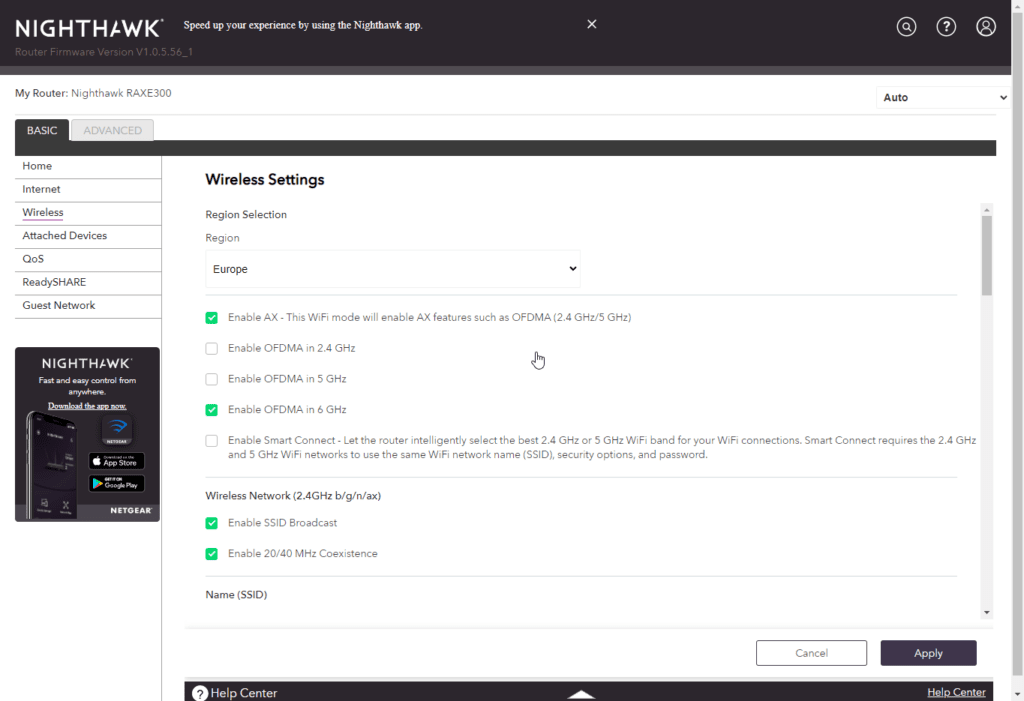
As far as I am aware, Netgear keeps the firmware features identical on all these Nighthawk routers, and the overall features are the same as the RAXE500.
You have all the essential features, but if you have like granular control over everything and lots of features, you may find this underwhelming.
Like all other Netgear routers and mesh systems, this includes Netgear Armor, and you get a month free with it. It is a paid service which I find quite expensive, but it is a useful service to have if you have a large household of people that may not be very adept at identifying and avoiding potential cyber security risks.
Price and Alternative Options
The Netgear RAXE300 is available on Amazon US for $399.99 and Amazon UK for £376.86, albeit not in stock.
The Netgear RAXE300 still isn’t available on the Netgear store, but the RAXE500 is £550.
You then have the ASUS ROG Rapture GT-AXE11000 for £478.99.
Overall
Most home users can ignore the RAXE500, it is an amazing router, but it is unlikely you will be able to push it to its limits.
The Netgear RAXE300 is going to provide almost an identical experience but for almost £200 less. It should be more than adequate for any demanding home scenario or even any small businesses wanting to take advantage of the speeds WiFi 6E brings.
With the range of this router being superb, it is quite appealing over mesh systems. As long as you can place this centrally, it has the potential to outperform a mesh system and for less money.
With this router, I did experience some teething issues. I think this is user error and my complex network, though it is possibly the router itself as it is new to the market.
Netgear Nighthawk RAXE300 Wi-Fi 6E Router Review Rating
Summary
The Netgear Nighthawk RAXE300 is a superb router at a much more attractive price point than its bigger brother, the RAXE500. Most users will unlikely see a difference in performance, and this, therefore, makes it a better buy.
Overall
90%-
Overall - 90%90%
Pros
- Excellent price-to-performance ratio
- Outstanding performance and range with 5Ghz @ 160Mhz
- 6Ghz should guarantee 160Mhz channel width and multigig performance
Cons
- Some teething problems with the set-up
- 6Ghz lacks the range vs 5Ghz
I am James, a UK-based tech enthusiast and the Editor and Owner of Mighty Gadget, which I’ve proudly run since 2007. Passionate about all things technology, my expertise spans from computers and networking to mobile, wearables, and smart home devices.
As a fitness fanatic who loves running and cycling, I also have a keen interest in fitness-related technology, and I take every opportunity to cover this niche on my blog. My diverse interests allow me to bring a unique perspective to tech blogging, merging lifestyle, fitness, and the latest tech trends.
In my academic pursuits, I earned a BSc in Information Systems Design from UCLAN, before advancing my learning with a Master’s Degree in Computing. This advanced study also included Cisco CCNA accreditation, further demonstrating my commitment to understanding and staying ahead of the technology curve.
I’m proud to share that Vuelio has consistently ranked Mighty Gadget as one of the top technology blogs in the UK. With my dedication to technology and drive to share my insights, I aim to continue providing my readers with engaging and informative content.

